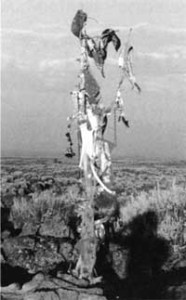Traditional Land Use as Starting Point: Opening Cross-cultural Dialogue at Crater Lake and Lava Beds
By Douglas Deur and Steve Mark
National Park Service units were established on some of the most dramatic landscapes and at some of the most historically significant locations of the West. As such, many—perhaps most—NPS units contain places of enduring significance to American Indians: hunting and gathering areas, sacred sites, and settlements. Strong personal or collective ties to these landscapes often persist among contemporary American Indians and this cultural significance can pre-date the establishment of park units by millennia. The potential for cross-cultural discord, therefore, is woven into the structure of parks, as these lands have come under the stewardship of people who possess values, beliefs, and expectations quite different from those of nearby tribes. Some park units have attempted to meet this challenge, while others have not—a situation arising more from individual personalities than overarching NPS policy (Keller and Turek 1998). Increasingly, however, tribes assert treaty rights within park boundaries and seek to engage NPS policies within formal government-to-government relations.
 |
| Modoc medicine flag left by tribal members at Lava Beds National Monument. |
Crater Lake National Park, Oregon, and Lava Beds National Monument, California— located on the northern and southern ends of the Klamath Basin, respectively—have long been areas of particular cultural significance to native peoples, particularly the Klamath and Modoc Indians. Crater Lake is a well-documented sacred site, serving traditionally as a place for vision quests and shamanistic training. Portions of this park were originally included in the lands allocated to the Klamath Tribes (consisting of the linguistically associated Klamath and Modoc peoples, as well as Paiute ‘Yahooskins’) in their 1864 treaty with the United States government. Hunting and gathering sites located within the present national park were used by some tribal members well into the 20th century, often as part of a “seasonal round” that included extended stays at berry picking sites on adjacent national forest land. Lava Beds National Monument contains remnants of numerous villages, burial grounds, and hunting camps. These sites are equally significant to tribal members as the event leading to presidential designation of this monument in 1925—the Modocs’ ill-fated last stand against the U.S. Army in 1872-73. Abundant archeological materials persist within both parks, often corroborating ethnographic accounts. Clearly, within the contemporary political climate, issues of access, interpretation, and management loom around both of these park units.

